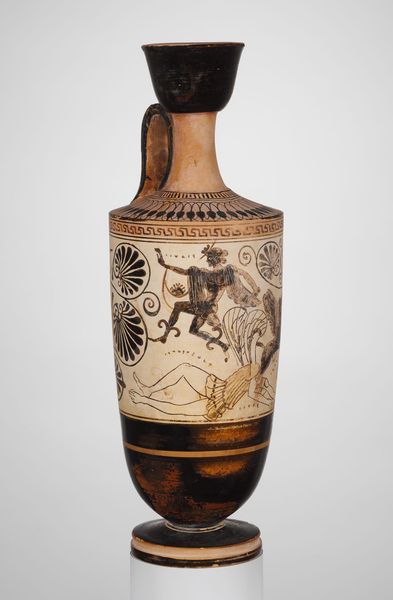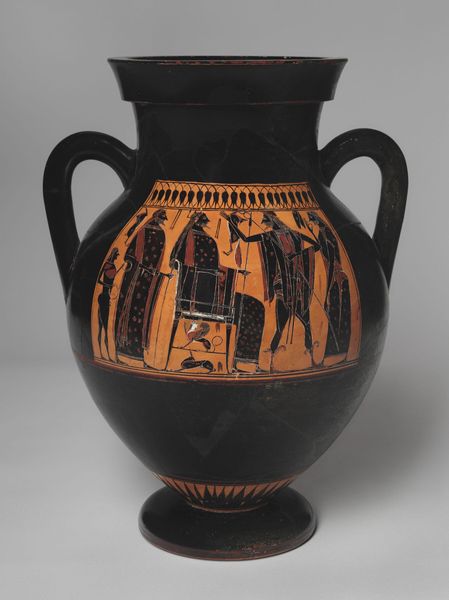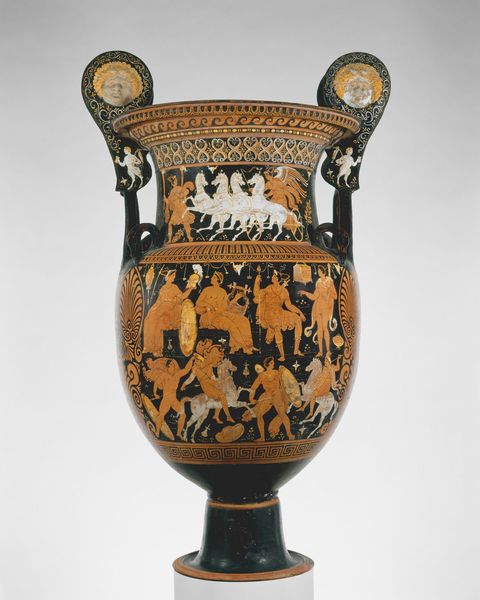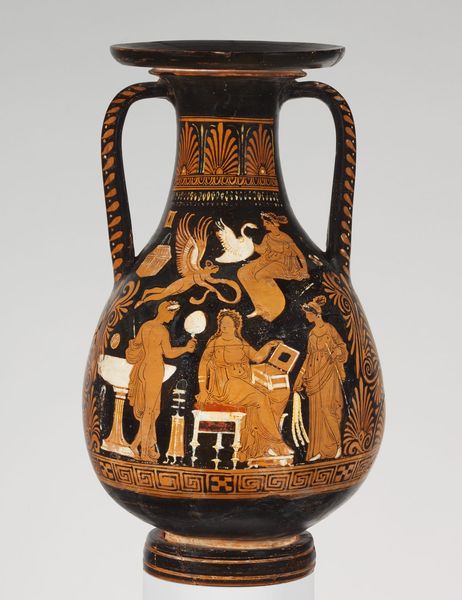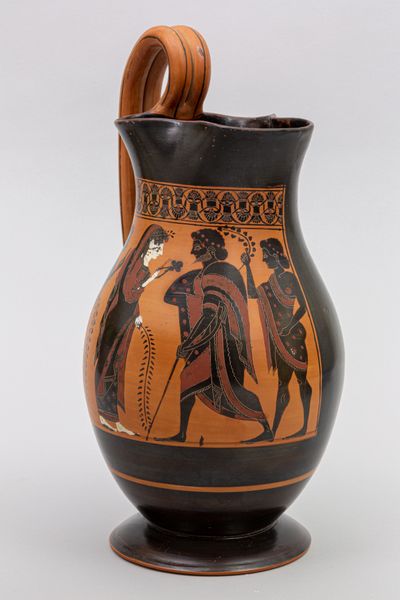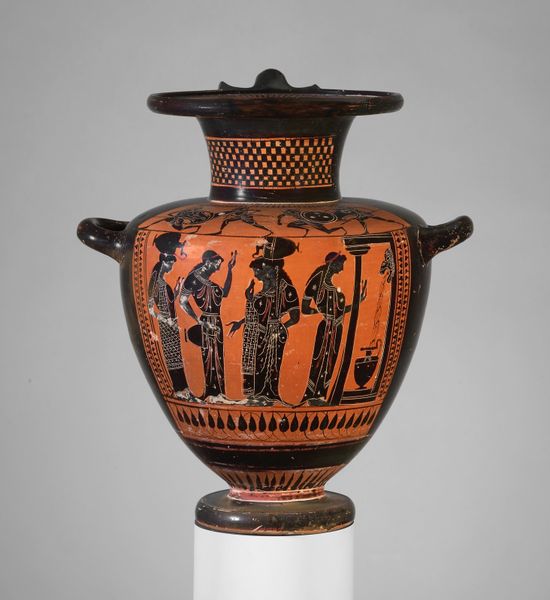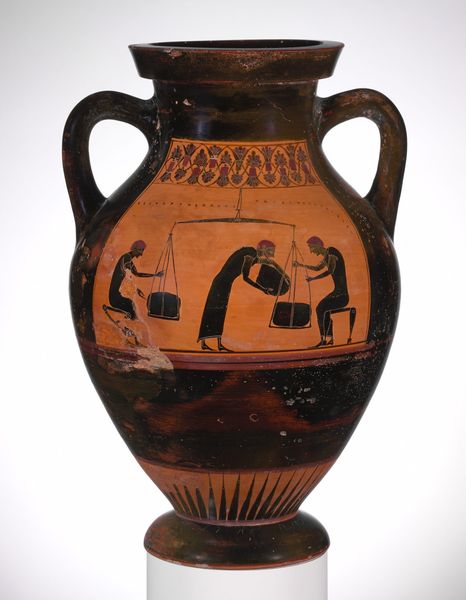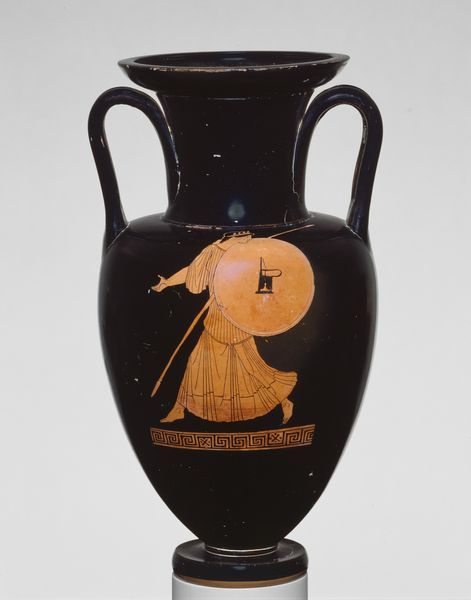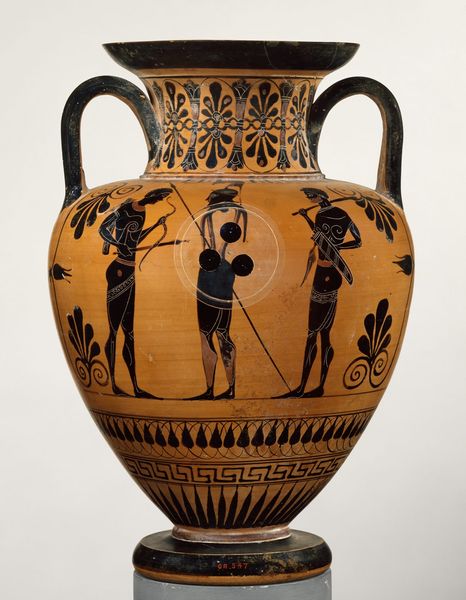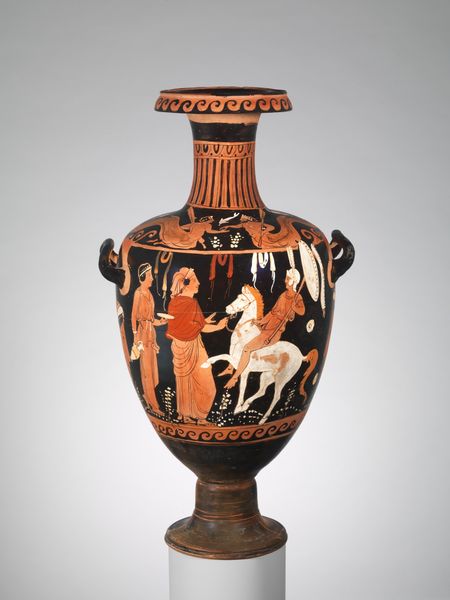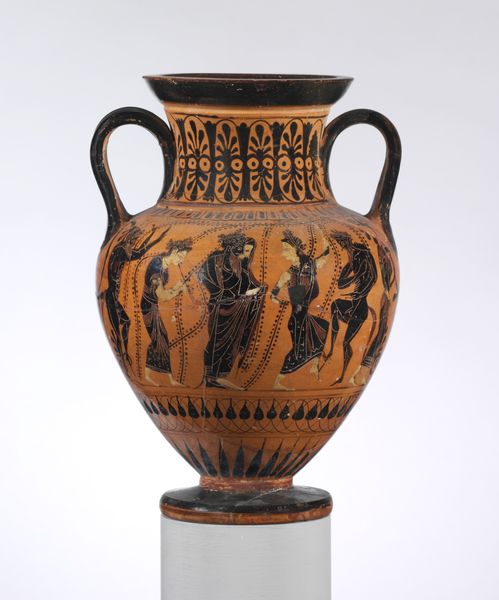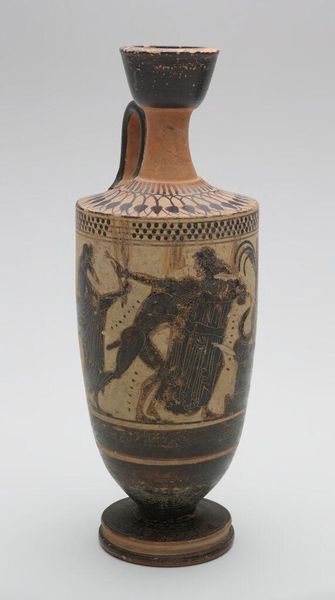
ceramic
#
narrative-art
#
greek-and-roman-art
#
ceramic
#
figuration
#
ancient-mediterranean
#
ceramic
Copyright: Public domain
Curator: At first glance, I find this Ancient Greek lekythos intensely dynamic, even frenetic. There's a vivid sense of movement created by these figures in combat. Editor: Indeed! This terracotta oil flask, dating back to about 420 BC, now resides at The Metropolitan Museum of Art. What intrigues me most is its potential function within ancient Athenian society and the context it gives us. Curator: The images themselves tell a rich story. We have a vivid battle scene below, then, a white band featuring scenes of repose. How do you read these oppositions? I can’t help but imagine how it speaks to rituals around war, perhaps funerary. Editor: You've touched upon an important aspect: these lekythoi were commonly associated with funerary rites. Oil was used in tending to the deceased. So, while we have scenes of martial valor, there's likely a subtext about honoring the fallen, or, reflecting upon ideals of heroism in the face of death. I would say the imagery blends traditional artistic practices for ceramics in Attica. Curator: Absolutely. Considering its likely funerary function, does the depiction of the pastoral along the vessel's top provide an implicit vision of afterlife? I can not help but wonder whether, it acted as a container, its shape itself evokes the embodied spirit's trajectory. Editor: That's a compelling idea, connecting form and imagery with cultural beliefs about the afterlife. We are seeing this particular artwork now, displayed behind glass, yet, within it, there exists a record of very important ancient Athenian concepts related to community, heroism, war, and memory, made public and visible through image. Curator: Precisely. Even now, divorced from its original context, the symbols retain power. The image of warriors, the careful arrangement of scenes—they allow us to continue participating in an ancient, deeply felt experience of life, struggle, and commemoration. Editor: In observing the evolution of this ancient object, it has transitioned into a potent signifier, encapsulating its profound influence and reflecting a cultural shift.
Comments
No comments
Be the first to comment and join the conversation on the ultimate creative platform.
